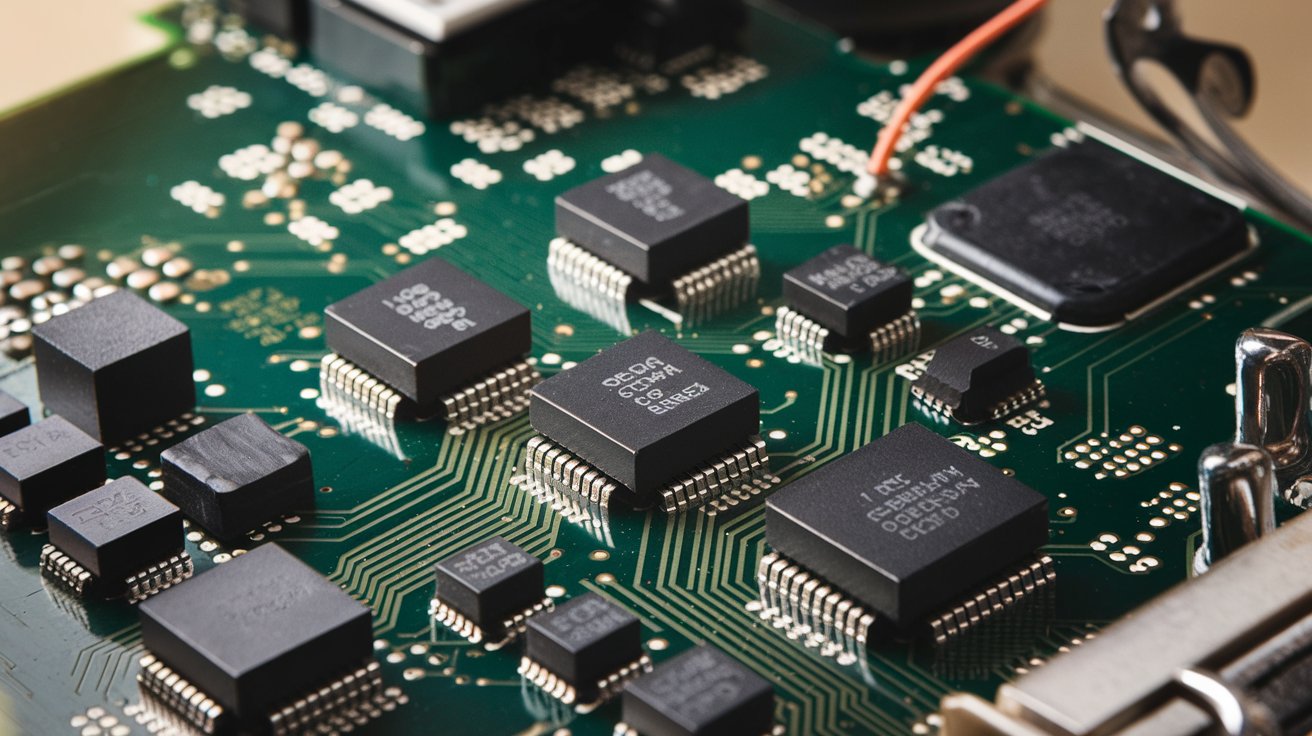
Transistors are the fundamental building blocks of modern CPUs, playing a crucial role in processing and controlling electrical signals.
As tiny semiconductor devices, they function as switches or amplifiers, enabling complex calculations and logic operations. The increasing number of transistors on a chip has been a driving force behind advancements in computing power, following the trends outlined by Moore’s Law. This exponential growth allows for faster, more efficient CPUs that can handle the demands of today’s technology. Understanding how transistors work within a CPU is essential for grasping the underlying principles of computer performance.
In this article, we will explore the significance of transistors in CPUs, their types, and their impact on modern computing.
What are transistors and what role do they play in a CPU?
Transistors are semiconductor devices that act as switches or amplifiers, allowing for the control and processing of electrical signals within a CPU.
They play a critical role in executing calculations and logical operations, forming the foundation of modern computing architecture.
How are CPU transistors made?
CPU transistors are made through a complex manufacturing process called photolithography, which involves layering semiconductor materials, applying photoresist, and using light to etch patterns onto the silicon wafer.
This process allows for the precise creation of tiny transistors that can be densely packed on a chip, enabling advanced computing capabilities.
Is a CPU just a bunch of transistors?
While a CPU is composed of billions of transistors, it is more than just a collection of these devices. The transistors work together in complex circuits to perform calculations, execute instructions, and manage data flow, forming the core of a CPU’s architecture and functionality.
How do transistors function within a CPU?
Transistors function within a CPU by acting as electronic switches that control the flow of electrical signals based on binary inputs (0s and 1s).
They combine in various configurations to perform logical operations, amplify signals, and store information, enabling the CPU to execute instructions and process data efficiently.
What types of transistors are commonly used in CPUs?
The most commonly used transistors in CPUs are Metal-Oxide-Semiconductor Field-Effect Transistors (MOSFETs), specifically in Complementary Metal-Oxide-Semiconductor (CMOS) technology.
This combination allows for low power consumption and high-speed operation, making it ideal for modern microprocessors.
Does a processor only contain transistors?
No, a processor does not only contain transistors; it also includes other components such as resistors, capacitors, and various logic gates that work together to perform computations.
These elements enable the processor to execute instructions, manage data flow, and support additional functionalities beyond simple switching.
How has the evolution of transistor technology impacted CPU performance?
The evolution of transistor technology has significantly improved CPU performance by enabling higher transistor densities, which allows for more processing power and faster operation speeds within the same physical space.
As transistors have become smaller and more efficient, CPUs have been able to execute more complex tasks while consuming less power, enhancing overall computing efficiency.
What is Moore’s Law, and how does it relate to transistors in CPUs?
Moore’s Law is the observation that the number of transistors on a microchip doubles approximately every two years, leading to exponential increases in computing power and efficiency.
This phenomenon has driven advancements in CPU technology, enabling more powerful processors to be developed within the same size constraints as previous generations.
How many transistors do CPUs have?
Modern CPUs can contain billions of transistors, with high-end processors often exceeding 10 billion transistors per chip.
This substantial transistor count allows for greater processing capabilities, enabling the execution of complex tasks and improved overall performance.
Are all transistors in a CPU the same?
No, not all transistors in a CPU are the same; they can vary in type, size, and function depending on their specific roles within the chip.
For example, some transistors may be optimized for switching operations, while others may be designed for amplifying signals or performing specific logic functions, contributing to the overall efficiency of the CPU.
Why does a CPU need so many transistors?
A CPU needs many transistors to perform complex calculations, manage data processing, and execute multiple instructions simultaneously, which enhances overall computing power.
The high transistor count enables parallel processing capabilities, improved efficiency, and the ability to support advanced features like multi-core architectures and sophisticated instruction sets.
How do the number of transistors affect the processing power of a CPU?
The number of transistors directly impacts a CPU’s processing power by allowing it to handle more operations simultaneously, leading to improved performance and efficiency.
A higher transistor count enables greater parallelism and the ability to execute complex instructions, ultimately resulting in faster computation and enhanced multitasking capabilities.
How were the billions of transistors on a CPU chip designed?
The billions of transistors on a CPU chip are designed using advanced computer-aided design (CAD) software that creates intricate layouts based on logic circuit requirements and performance specifications.
Engineers utilize processes like photolithography and simulation techniques to ensure precise manufacturing and optimize transistor arrangement for speed, efficiency, and power consumption.
What challenges do manufacturers face when scaling down transistor sizes?
Manufacturers face several challenges when scaling down transistor sizes, including increased heat generation, power leakage, and quantum effects that can disrupt normal transistor operation.
Additionally, the complexity and cost of fabrication processes rise significantly, requiring advanced technologies and materials to maintain performance and reliability at smaller scales.
How do transistors contribute to power efficiency in modern CPUs?
Transistors contribute to power efficiency in modern CPUs by allowing for lower voltage operation and minimizing power leakage, which reduces overall energy consumption during processing.
Advanced transistor designs, such as FinFETs, enable better control of electrical currents, further enhancing efficiency and reducing heat generation while maintaining high performance.
What is the significance of multi-core CPUs in relation to transistors?
Multi-core CPUs leverage the abundance of transistors by integrating multiple processing cores on a single chip, allowing for parallel processing and improved performance for multitasking and resource-intensive applications.
This architecture maximizes the utility of available transistors, enabling more efficient data processing and energy use while enhancing overall computing power.
What future developments in transistor technology?
Future developments in transistor technology, such as the adoption of 3D transistors and new materials like graphene or carbon nanotubes, could significantly enhance CPU performance and power efficiency.
Additionally, advancements in quantum computing and neuromorphic computing are expected to revolutionize transistor design, enabling processors that can handle complex computations far beyond current capabilities.
FAQS
1 . How many transistors are typically found in a modern CPU?
Modern CPUs can contain billions of transistors, with advanced processors exceeding 10 billion transistors.
2 . What is the smallest transistor in a CPU?
The smallest transistors in a CPU today are around 2 nanometers in size.
3 . How big are transistors today?
Transistors in modern CPUs typically range from 5 to 10 nanometers, with some advanced technologies reaching as small as 2 nanometers.
4 . What types of transistors are used in CPUs?
The most common types of transistors used in CPUs are Metal-Oxide-Semiconductor Field-Effect Transistors (MOSFETs), particularly in CMOS (Complementary Metal-Oxide-Semiconductor) technology.
5 . What is the relationship between transistor size and CPU power consumption?
Smaller transistors typically consume less power, leading to greater energy efficiency in CPUs, which is crucial for mobile and embedded devices.
Final words
Transistors are the cornerstone of CPU technology, driving the performance and efficiency of modern computing.
Their evolution has enabled unprecedented advancements in processing power, allowing devices to handle increasingly complex tasks. As transistor technology continues to innovate, we can expect even greater capabilities in future CPUs, including enhanced speed, reduced power consumption, and improved multitasking. The challenges of scaling down transistor sizes will push manufacturers to explore new materials and architectures.
Ultimately, the future of computing hinges on the continued development of transistors, making them an integral part of technological progress. Understanding their significance helps us appreciate the sophistication of the devices we rely on every day.



